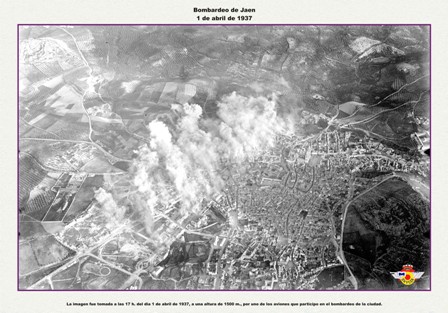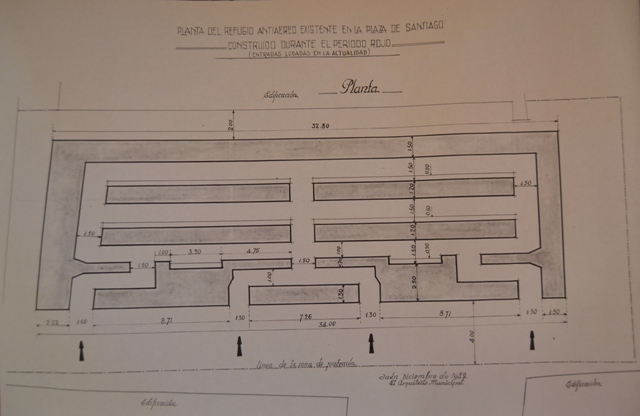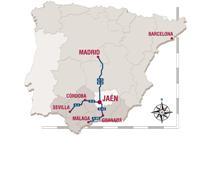- es
- en
Monographics - Santiago Square Civil War Shelter
City War Shelter
Santiago Square
The Civil War in Jaén
-San Ildefonso Square, damaging the façade of the Basilica, where the damage which was caused by the shrapnel still remaining visible today.
-Deán Mazas Square, damaging part of the Treasury building.
-Fontanilla Street, currently Federico Mendizabal street; it was the bloodiest attack, causing 22 deaths.

The high number of victims below 18 years old is incredibly noticeable. This was because at that time, students in public schools didn’t have class on a Thursday afternoon, the moment that the bombing took place; therefore many children were playing in their houses or the streets.

Initially, six shelters were supposed to have been built with the following geographical breakdown:
- Moscú square (Magdalena square)
- Merced square
- Old prison (Martínez Molina)
- Santiago square (the only one open to the public today)
- Largo Caballero square (San Juan square)
- Canalejas square (San Ildefonso square)
Finally, 35 shelters were built; also 114 shelters more were reported to have been built in private houses.
¿DID YOU KNOW THAT…?
The name of the shelter comes from the old church of Santiago that was located above the area where today we can find the shelter. That church had medieval origins, in the 18th century it was reported that it was already in ruins. In 1810, a French captain decided to tear down the church to use the stones to reinforce the construction of Santa Catalina's Castle.
- It is said that one of the escort pilots of the bomber aircraft was from Jaén, so he decided to abandon the mission when he discovered that his hometown was the objective of the bombing.
- The clock of San Ildefonso church remained stopped at 17.20 for a long time; it was the hour of the bombing.
- The poet Miguel Hernández wrote numerous articles about the bombing in Frente Sur.
- Most of the population of the city fled to the Santa Catalina hills or to the countryside around it because fear spread quickly across the city. The owners of farmhouses moved to them until the very end of war.
- The reference point of the bombing was the cathedral.
- The orders of operation guided the pilots to the reference point from where they had to start to bomb, this place is supposed to be the eastern side of the cathedral.
Source document: Bombardeo de Jaén (Juan Cuevas Mata)















